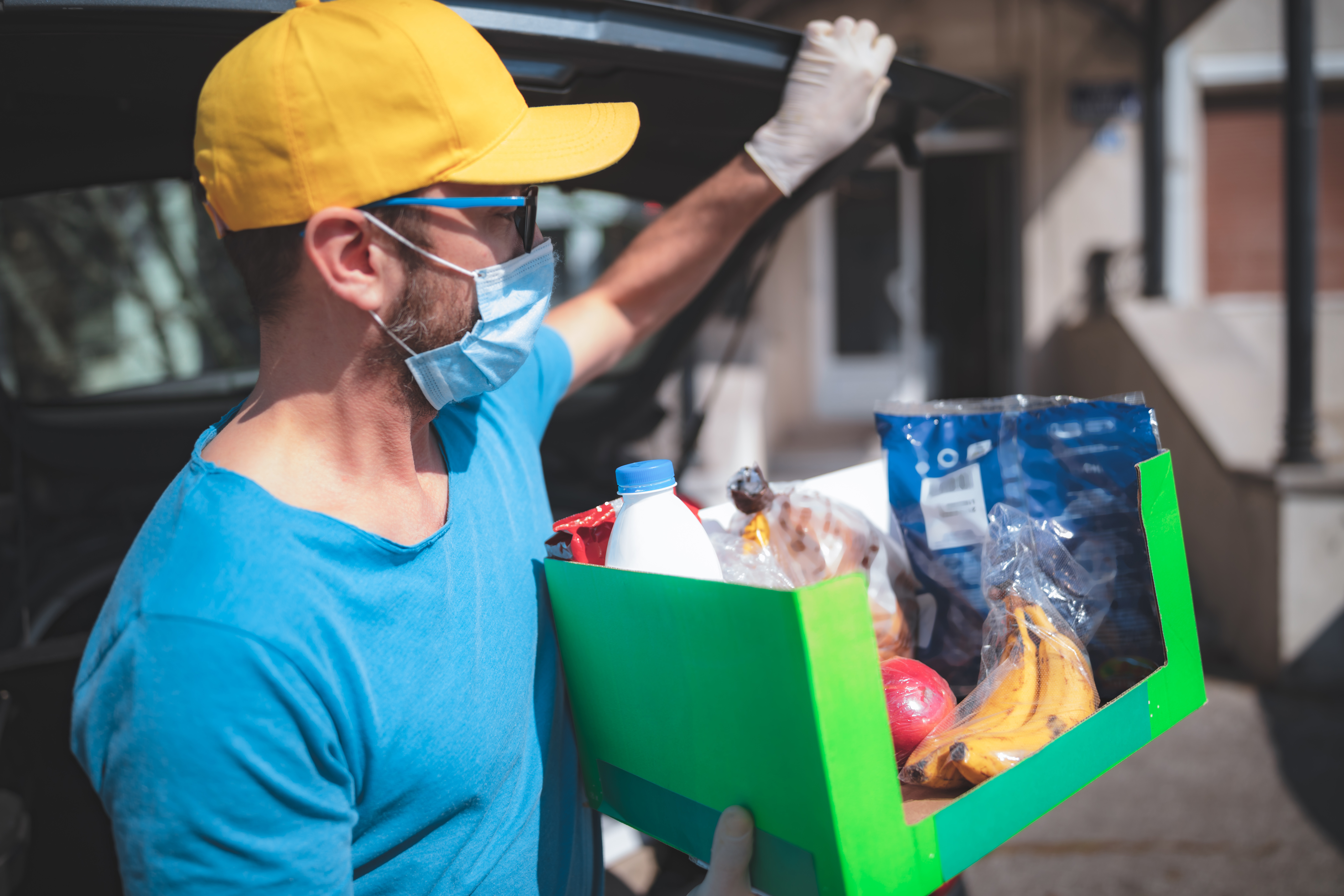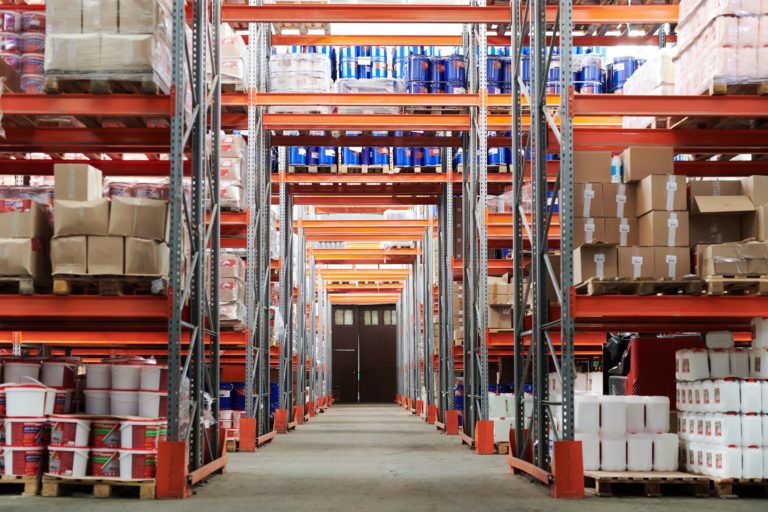Impact
CPG Economic Pulse: Q3 and Cost Forecast
November 2021
Third-Quarter Look
Ever-increasing consumer demand feels like an almost rote takeaway as the final numbers from the third quarter of 2021 tell a familiar story. What is new territory, however, is that in August and September of the third quarter, demand pushed above the unprecedented sales of March 2020 when store shelves were emptied by panicked consumers.
The security of essential goods on shelves cannot be taken for granted. It has not been simple or quick. It has not been without significant cost. And it is not over.
But Americans have not seen shelves wiped clean since the beginning of the pandemic.
Rather, during a supply chain crisis where the cost of everything to make and ship goods has skyrocketed and the availability of ingredients, materials and truckers is in constant question, consumers have seen — at most — spotty product shortages. It is the ultimate proof point that consumer packaged goods companies have learned, adapted and gone to great lengths to deliver for consumers against a tremendous headwind.
The security of essential goods on shelves cannot be taken for granted. It has not been simple or quick. It has not been without significant cost. And it is not over.
Consumer Brands expects that wholesale costs will moderate some in the coming months. That moderation, however, will be far above the trendline the economy would have been on without a pandemic. How fast and how much those costs moderate will be based on supply chain bottlenecks easing and the labor force growing. Only then will companies — and consumers — see price relief.
What’s Driving up Costs?
Inflation has hit a 30-year high driven up by elevated demand and a supply chain struggling to catch up. Across the economy, the pain points are growing more painful for companies and consumers.
The CPG industry specifically has done everything it can to deliver for consumers, never losing sight of the importance of ensuring people have the products they rely on every day. But it hasn’t been easy and there are few signs it will grow easier soon. General Mills reported that before the pandemic, the company saw about 50 supply chain issues — ingredient delays or other disruptions — a month. Now, it sees 500-600 a month. Jon Nudi, General Mills’ president of North American retail, told CNN, “I’ve been doing this for a long time, almost 30 years, and I can tell you, it’s definitely the most challenged and dynamic supply chain environment I’ve seen in my career.”
What’s feeding the challenged environment?

#1 Record consumer demand.

#2 Significant labor shortage across the CPG supply chain.

#3 Soaring wholesale and shipping costs.
Demand Keeps Climbing, Defying Expectations
At the very start of the pandemic, in March 2020, demand for CPG products skyrocketed 21% compared to the same time the year before as consumers wiped store shelves clean in a fit of panic buying.
Manufacturers overhauled supply chains and shelves were restocked, but demand didn’t fade. Demand for CPG products showed year-over-year growth every month since the start of the pandemic with one exception: March 2021, which showed only a slight decline of 1.4%.
Most recently, demand in the third quarter of 2021 was 8.3% more than the same period the year before and 1.8% more than the prior quarter.
What is driving demand upward? While consumer prices for CPG products have risen 3.2% over last year, it does not approach explaining the level of demand we are experiencing. COVID-19 cases have slowed since the delta variant’s summer rampage. The elevated sales of CPG products may finally fade as that number draws lower, but significant lifestyle changes will result in residual demand. In addition to millions of workers adopting permanent or hybrid remote work arrangements, many Americans moved to new homes or adopted new rhythms and habits. After 19 months of sustained high demand — demand that has risen even as COVID-19 cases have ebbed and flowed — there are more significant behavior changes, like remote working and staying home, that look as though they will outlast pandemic novelty.
- Jan-20
- Feb-20
- Mar-20
- Apr-20
- May-20
- Jun-20
- Jul-20
- Aug-20
- Sep-20
- Oct-20
- Nov-20
- Dec-20
- Jan-21
- Feb-21
- Mar-21
- Apr-21
- May-21
- Jun-21
- Jul-21
- Aug-21
- Sep-21
- 2020 (in millions of dollars)
- 1425151
- 1425151
- 1685242
- 1488862
- 1551673
- 1561922
- 1576916
- 1560810
- 1571042
- 1567966
- 1569809
- 1535240
- 1636059
- 1593282
- 1684543
- 1674617
- 1657597
- 1682004
- 1662299
- Q3 (in millions of dollars)
- 1662299
- 1710720
- 1724293
There Is a Labor Shortage Across the CPG Supply Chain
The labor shortage rippling across the CPG supply chain is at the top of the industry’s list of concerns. Consumer Brands’ analysis of the October Bureau of Labor Statistics data found that the CPG industry added only 6,400 jobs last month, doing little to close the gap on the more than 130,000 job openings.
CPG added only 6,400 jobs last month. There are still 130,000 job openings.
The persistent gap between job openings and additions is not closing with rising wages. Wages in the CPG industry are up 5.9% in October compared to a year ago. For manufacturing facility employees specifically, wages have grown faster, rising 8.9%. Additionally, CPG companies are attracting talent through initiatives that include funding college tuition, increasing parental leave and adopting greater flexibility.
The industry is recruiting at an intensely competitive moment when companies across the economy are challenged to find available workers. Overall employment costs rose at the fastest annual rate in 19 years.
Also struggling are industries along the supply chain. Trucking is a particular pain point. The trucking industry added only 8,000 jobs in this month’s report, far short of the 80,000 needed, according to the American Trucking Associations. The energy going toward alleviating congestion at California’s Los Angeles and Long Beach ports is important; however, without an available supply of drivers to move goods from ports to their next destination, the bottleneck may only migrate from sea to land.
The Cost to Make and Ship CPG Products has Skyrocketed
The ripple effect of consumer demand and the labor shortage is hitting companies’ bottom line and, ultimately, consumers’ wallets. Wholesale costs, measured by the Bureau of Labor Statistics’ Producer Price Index, have hit record highs month after month, most recently posting an 8.6% annual increase in October.
Even record high wholesale costs belie the full impact of how expensive it is for CPG companies to manufacture products. The BLS food producer price index shows prices are up 14.5% over last year, far more than overall PPI. For some of the industry’s most important commodities, year-over-year prices are even greater. Wheat that goes into a host of food products is up 64%; aluminum for packaging has swelled 88%; ethyl alcohol for cleaning products is up 62%. The list goes on, but the story stays the same.
Whether they’re coming via ocean, rail or road, it costs more to move goods. Freightos reported the median cost of shipping a standard metal container from China to the West Coast was $20,586 in September — almost double what it cost in July and 700% higher than it cost a year ago. With diesel fuel costs up 53% this week compared to a year ago, combined with a truck driver shortage, trucking costs have soared.
Forecasting What’s Ahead for Cost and Demand
There are a significant number of variables that contributed to the current economic climate and there are just as many that will inform when it stabilizes. But Consumer Brands forecasts that demand will remain elevated through the fourth quarter of 2021, with an anticipated growth rate of 10-11.5%.
The continued demand will contribute to more stress on a supply chain at its breaking point and do little to calm consumers’ fears of shortages. A Consumer Brands/Ipsos poll of 1,023 American adults conducted October 22-25 found that 62% of Americans are concerned about CPG product shortages in the next few months based on recent supply chain news. Half (50%) of Americans report having already experienced grocery product shortages in the past few months and another 17% say they expect to in the coming months.
One clue to which products could run short is those made with commodities experiencing extremely high prices. Consumer Brands’ analysis of overall food manufacturing and a host of key commodities forecasts that costs will begin to decline — if they haven’t already — in the coming months. However, while declining costs would be a promising sign, they are still elevated far above what would have been expected had the U.S. not dealt with a pandemic.
Looking at all food manufacturing, the costs to make products skyrocketed throughout 2021. Consumer Brands forecasts a slight slowdown in wholesale costs but one that is still around 10.5-12% higher than the year before. That anticipated slowdown in costs is still well above the historical rate of growth had COVID-19 not happened, which would have been 1.3% had pre-pandemic norms held.
An analysis and forecast for several key commodities for the CPG industry proves similar to overall food manufacturing. For example, ethyl alcohol that is used in many cleaning products, was at one point more than 70% higher in price than the year before. While the wholesale cost for ethyl alcohol has come down, it is still 32% higher than last year.
The same is true for corn. At one point, it was 150% higher than the year before. Corn has moderated but is still substantially more expensive than a year ago, up 38%.
A look at a commodity groupings, trendlines and interviews with individual market experts informed the expectations below.
- Mar-18
- Jun-18
- Sep-18
- Dec-18
- Mar-19
- Jun-19
- Sep-19
- Dec-19
- Mar-20
- Jun-20
- Sep-20
- Dec-20
- Mar-21
- Jun-21
- Sep-21
- Dec-21
- PPI Food Manufacturing (% YOY)
- 1.1
- -.5
- -.7
- .7
- .3
- 1.0
- 2.6
- 2.5
- .8
- 1.1
- -.2
- .8
- 5.4
- 12.0
- 14.5
- Future PPI Food Manufacturing (% YOY)
- 14.5
- 11.2
- Future Overall PPI (% YOY)
- 8.6
- 8.9
- Overall PPI (% YOY)
- 2.9
- 3.3
- 2.7
- 2.6
- 2
- 1.6
- 1.5
- 1.4
- .3
- -.7
- .3
- .8
- 4.1
- 7.6
- 8.6
- Historic Growth Rate Prior to COVID-19
- 0.013146095
- 0.013146095
- 0.013146095
- 0.013146095
- 0.013146095
- 0.013146095
- 0.013146095
- 0.013146095
- 0.013146095
- 0.013146095
- 0.013146095
- 0.013146095
- 0.013146095
- 0.013146095
- 0.013146095
- 0.013146095
Agricultural Inputs →
October-December are Consumer Brands’ forecasts
- Jan-21
- Feb-21
- Mar-21
- Apr-21
- May-21
- Jun-21
- Jul-21
- Aug-21
- Sep-21
- Oct-21
- Nov-21
- Dec-21
- Meat
- 1
- 8
- 11
- 15
- -4
- 26
- 25
- 32
- 34
- 28
- 28
- 26
- Wheat
- 17
- 25
- 32
- 20
- 49
- 39
- 46
- 78
- 64
- 53
- 50
- 39
- Soybeans
- 53
- 61
- 68
- 68
- 99
- 72
- 66
- 62
- 30
- 16
- 9
- .1
- Oats
- 6
- 8
- 16
- 20
- 15
- 14
- 33
- 58
- 82
- 97
- 96
- 85
- Corn
- 32
- 45
- 44
- 90
- 152
- 121
- 109
- 116
- 56
- 38
- 43
- 39
← Household Product Inputs
October-December are Consumer Brands’ forecasts
- Jan-21
- Feb-21
- Mar-21
- Apr-21
- May-21
- Jun-21
- Jul-21
- Aug-21
- Sep-21
- Oct-21
- Nov-21
- Dec-21
- Ethyl Alchohol
- 11
- 20
- 28
- 42
- 71
- 71
- 49
- 50
- 48
- 44
- 38
- 37
- Ethanol
- 5
- 16
- 32
- 70
- 98
- 98
- 63
- 62
- 62
- 43
- 56
- 51
- Nitrogen
- 23
- 23
- 24
- 23
- 24
- 24
- 23
- 23
- 18
- 22
- 23
- 19
- Ammonia
- 11
- 18
- 21
- 22
- 28
- 48
- 59
- 64
- 62
- 57
- 52
- 53
Packaging and Shipping Inputs →
October-December are Consumer Brands’ forecasts
- Jan-21
- Feb-21
- Mar-21
- Apr-21
- May-21
- Jun-21
- Jul-21
- Aug-21
- Sep-21
- Oct-21
- Nov-21
- Dec-21
- Aluminum
- -3
- 3
- 5
- 19
- 26
- 33
- 35
- 36
- 36
- 36
- 35
- 32
- Plastic
- 8
- 11
- 22
- 34
- 41
- 45
- 46
- 45
- 45
- 40
- 36
- 31
- Plastic Bottles
- -3
- -1
- 0
- 2
- 5
- 7
- 11
- 15
- 16
- 16
- 17
- 17
- Pallets
- 4
- 6
- 10
- 16
- 25
- 31
- 36
- 35
- 33
- 32
- 30
- 29
- Lumber
- 57
- 60
- 65
- 91
- 119
- 97
- 45
- 5
- -15
- -4
- 19
- 33
- Trucking
- 7
- 11
- 15
- 21
- 26
- 21
- 21
- 21
- 20
- 22
- 21
- 20
Conclusion
Well into the second year of pandemic life, it is increasingly clear there will not be an “end” date. Something that has irreversibly changed American behavior, the economy and the world will not conclude at a specific hour.
Over the next eight to 12 months, the hope is the situation will stabilize, new patterns will solidify and the economic whiplash will settle. But only time will tell.
About This Research
Consumer Brands’ CPG Economic Pulse analyzes the totality of the industry — food, beverage, household and personal care products — to offer a timely look at an industry that contributes $2 trillion to the U.S. economy and supports more than 20 million jobs.
The data in this report is released on a rolling calendar schedule. The figures presented are current at the time of publication and are subject to updates and revisions.
Methodology
Economic analysis provided by JEK Analytics.
The CPG purchases data is derived from U.S. Bureau of Economic Analysis reporting.
Estimates include food, nonalcoholic and alcoholic beverages for off-premises consumption; food purchased and consumed on farms; nonprescription drugs, household supplies and personal care purchases; and net purchase of goods by U.S. residents abroad.
The Consumer Brands/Ipsos poll of 1,023 American adults was conducted October 22-25.

The Economic Contributions of CPG
The CPG industry is the largest manufacturing employer in the United States. The food, beverage, household and personal care products that the industry makes have a positive impact on the lives of every American, every day.

